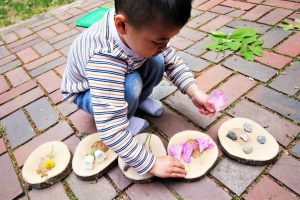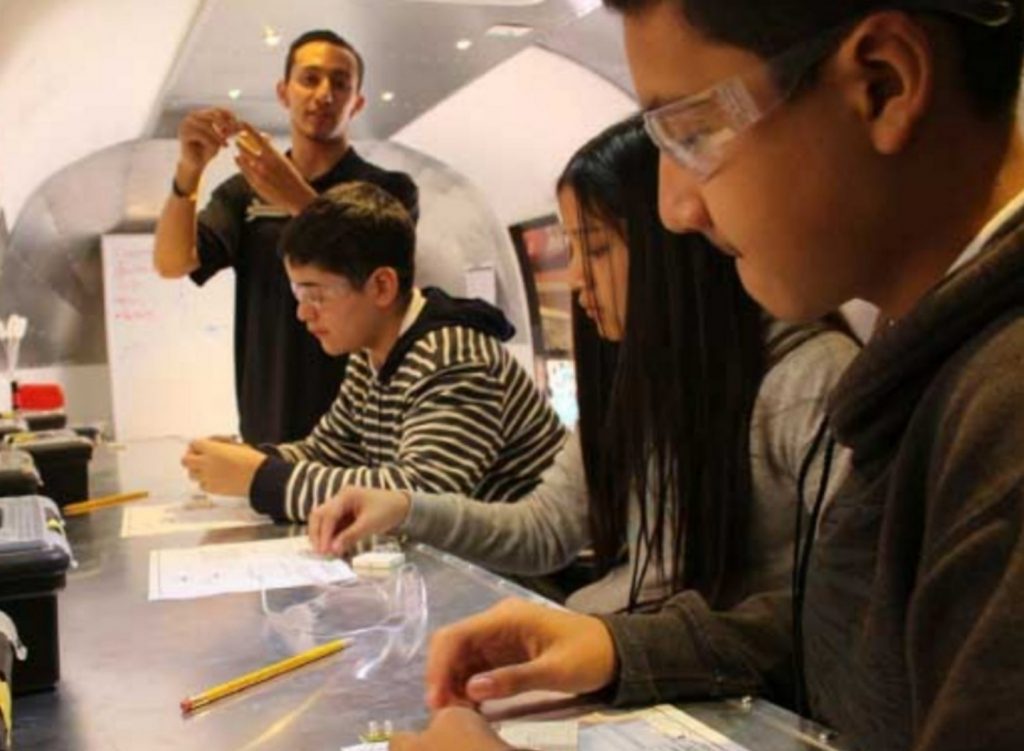
Cultivating a culture of math and problem-solving skills can give rise to astronauts, engineers, software developers and medical scientists. It’s no secret that science, technology, engineering and math (STEM) careers are the driving force behind our economy and can propel us into space — literally.
So, where does this odyssey of the math mind begin? As it turns out, we can begin to foster math sense as early as our kid’s infancy. Children start to notice patterns in their environment even when they are babies, and as we encourage them to explore their world over time through play, practice and even failure, children develop the confidence required to strengthen mathematical skills.
If the mere sound of the word math makes you cringe, consider this: Opening yourself up to explore math concepts as an adult (despite your relationship to math as a student) helps your child view math as a thing to be embraced, not feared. From counting your toddler’s tiny toes to solving algebraic equations with your teen, you can be part of the building blocks that develop great math minds.
Here are seven practical tips your family can do to begin engaging even the feistiest opposer of math — even if that person is you.
Puzzle it out
Puzzles are great because they force kids to slow down. According to Yohance Serrant, a high school math teacher at New Roads School in Santa Monica and founder of Yo Math, puzzles are a great way for kids to “dedicate themselves to problem solving,” and it’s an activity that the entire family can do together. Puzzles also are great at developing spatial skills, an important element in understanding measurements, navigation and estimating distance — in other words, the everyday stuff that often goes unnoticed.
Mathematicians are people
Share stories about famous mathematicians and give a behind-the-scenes glance into some of the great math stories.

An excellent book to start with is “Mathematicians Are People, Too: Stories from the Lives of Great Mathematicians.” Serrant says that explaining the origins of math can reduce math anxiety. “When [children] see that humans created math, and that it’s not some random stuff that came out of nowhere, it immediately becomes more relatable, and they realize it is totally possible to understand.”
Make it a game
I have a household of competitors. We can turn everyday activities into enthusiastic rivalries (bake-offs are the current source of contention). To get the competitive juices flowing around math in your home, get creative with chores by posting a visual scoring chart somewhere everyone can see. Each time a chore is completed, that doer gets a score. Before you know it, the race is on to get socks picked up off the floor, dishes washed and floors swept. This game is a win-win for everyone: a clean house and bragging rights!
Board games are a great way to make math practice painless. Keeping score, adding and subtracting numbers quickly are all great ways to expose kids to number sense in a fun way. Namuka Mora, a homeschooling mom of three in San Diego, adds card games to summer homework assignments to help her kids “see and recognize numbers quickly.” Here are some game ideas for preschoolers. While older children are familiar with the likes of Monopoly and Yahtzee, some other cool board games that encourage mathematical thinking are Sagrada, Ricochet Robots, Pizza Fraction Fun and The Money Bag.
Technology to the rescue
Instead of fighting against your kids’ attachments to their phones and computers, make effective use of these pieces of technology by refocusing their time on their screens.
There is an abundance of math-inspired games for kids online. One of my students’ favorite games is Prodigy, which takes kids on adventure-filled quests to solve grade-level math problems and earn rewards. Redfin, Greenfield and Gorgin are fan favorites as well. Get the entire family involved by posting a record of high scores and personal bests. Recognition serves as its own reward.
More money, more math problems
Research reveals children can grasp the idea of money around ages two or three. Yikes! What’s even more fascinating is that money habits have already begun to form by age seven.

We can help shape attitudes toward money in more ways than one. Some ideas: Have your tiny tots separate coins according to color, shape and, eventually, value. Create a store using monopoly money and have kids manage it. Give an allowance and teach budgeting and saving.
Mapri Gray, a high school academic counselor and mom of two high school boys, actually has her kids sit and join her on budget day. “You would be surprised at some of the discussions this leads to,” she says. “They begin to think a lot more about their future and how they want it to look. This, to say the least, has given them a greater appreciation for finances, bills and taxes.” These are ways to help boost kids’ confidence with understanding value and all money matters.
STEM Fairs
To take your math learning out of the house, consider attending STEM fairs as a family. These fairs are excellent ways to experience the benefits of math while getting some hands-on learning.
They also offer a preview into possible career paths. You can ask your child’s math teacher for STEM events and fairs near you, or check Society for Science & the Public’s find a fair service.
National College Resources Foundation takes it a step further and will bring the classroom to you via their mobile S.T.E.A.M machine. This gives kids the ability to learn programming, coding and 3D game design, all while building their math and science skills.
Math on the sidewalk
Fresh air does wonders for the brain, and with a few chunks of sidewalk chalk, you and the family can turn your outdoor sidewalk into a stimulating classroom.
For young toddlers, try drawing a hopscotch with numbers and take turns jumping and counting out loud. Take a neighborhood walk as a family and help your third grader memorize multiplication by giving verbal quizzes. Back at home, chalk in hand, they can turn those mental problems into visual multiplication cards — sidewalk style.

Celebrate math events
Want another reason to enjoy pie? Hello, Pi Day! Use this math holiday (March 14) as an excuse to bake and, yes, eat pie as a family. Your kids will get plenty of math practice measuring ingredients. Practice fractions by cutting pieces of the pie — and not taking a bite until everyone gets the answers right.
The first 100 days of school is a fun time for kids in the classroom. Why not continue at home by creating artwork using 100 pennies, or anything you can find in your pantry? Count beans and guess how many servings equal 100.
Another idea: Create a list of math holidays and mark them on the calendar. Yes, there are several. Here’s a great list from Mathnasium, including Pythagorean Theorem Day (Dec. 16) and World Maths Day (March 14).
Cooking up a (math) storm
Some of my best childhood memories have come from learning from my mother in the kitchen. Time shared in the kitchen is a time to bond and create memories as well as provide opportunities for kids to learn how to measure, count and multiply. Following and adjusting recipes are a great way to engage your child while practicing math.
Like learning math, getting the most mileage from the attention spans of toddlers and teens takes practice, some failed attempts and constant encouragement. By incorporating some of these tips, according to Pedro Lopez, an eighth-grade math teacher at Telesis Science and Math Academy in West Covina, you are putting a “simple emphasis to math in everyday activities.” These simple steps are the secret to loving math as a family. Showing students the relevancy of numbers in everyday activities breaks the world of numbers and logic down into meaningful chunks. Before you know it, all the time counting tiny fingers, playing Uno and cooking in the kitchen with Mom and Dad will serve as the building blocks for future innovators.
Cherie Cofer is a mother, writer and founder of Write Works Tutoring Company.























